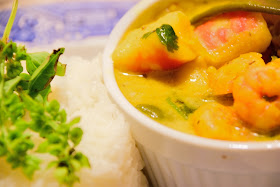
Yearning for an exotic cruise on a sail boat? Look no further than your own back yard.
Literally.
 |
| Seal Island up close. The home of the great whites in False Bay |
Provisioning the boat was easy. Two dinners and two breakfasts, some snacks. Water. And, of course, a few beers. It is a holiday after all!
After calling False Bay Yacht Club to arrange a mooring just to find out that there is none, we set off anyway. Real cruising by real sailors.
 |
| Peaceful afternoon sailing |
 |
| Balmy weather |
Soon we were close to East Shoal, a rocky outcrop about half way across the bay to Simon's Town. We had to make a choice of going north of this shoal and north of Seal Island. This would put us substantially downwind of Simon's Town, so we opted to bear into the wind and beat it southwards. One reef in the main and a bit of the genoa rolled away had us sailing about thirty degrees off the apparent wind at between five and six knots. The stays'l was still up, balancing the rig beautifully and we sailed for an hour and a half without touching the helm. The boat sailed like a dream, making happy noises while punching through the small choppy seas.
We sat quietly in the cockpit, having a grand old conversation about small things and big ideas, just enjoying the calming rythm of the sea and the boat. A balm to the soul, this felt like a continuous meditation in an idyllic atmosphere.
 |
| Look Ma, no hands! |
 |
| Strand beachfront scenery, the Helderberg as a backdrop |
It is at times like this that one is reminded of the peace and quiet of an anchorage. A marina is very different, with people walking about, the and the creaking noises from the strain of the boats tugging at the quays. Here in the anchorage it is quiet. We could hear people talking on the beach about two hundred meters away.
Dinner consisted of chilli con carne and a loaf of bread that we baked while the chilli was resting. The evening breeze made small swishing sounds as it caressed the rigging, wafting us into a proper sleep.
 |
| Some decent speed |
We had invited our neigbours over for a braai on board that evening, which called for additional provisions. This proved to be more difficult than anticipated, as Simon's Town does not have a butchery in the town. The nearest shop that sells meat is about five kilometers away.
No problem, we caught a minibus taxi to Fish Hoek, the next town. Yes, one of THOSE minibus taxis.
Very cheap fare, we had a wonderful time chatting away with the other passengers and the driver. Our shopping took all of ten minutes, after which we simply caught another taxi back to Simon's Town.
Our stress levels were hitting rock bottom by this time. The weather played along and we had a balmy afternoon. We even had time to read a book. I managed to finish Ayn Rand's Anthem. A wonderful short read.
Our dinner guests arrived shortly before sunset and we had meat on the griddle. How else, this is South Africa in summer. The meat was complemented with a salad and yet another freshly baked loaf of bread.
Wonderful company to share the dinner, our guests turned out to be a couple from California on a world cruise. Lots of stories were exchanged before they rowed their dinghy back. Yes, rowed. No outboard motor to kill the quiet sounds of the anchorage.
The next morning we hoisted the anchor, set our sails and had yet another wonderful sail back home. The wind was the same as two days before, seventeen knots gusting twenty from a southerly direction. Again, I was pleasantly surprised at the boat's performance. We were going at over seven knots average, peaking at seven and a half knots speed over ground as measured by the GPS. Decent performance from a seven and a half ton cruising boat.
This was a wonderful cruise. My first proper cruise where we did nothing and just relaxed. We did not even visit the pub in the yacht clubAnd it is on our own doorstep.
 |
| Freshly baked bread |
Increasingly, I get the impression that fewer people do these little overnight trips, opting for far more expensive long trips, flying overseas.
 |
| False Bay Yacht Club marina, Simon's Town |
One of the most beautiful places in the world.
Authored by Johan Zietsman
Last updated on 2014-12-24













































